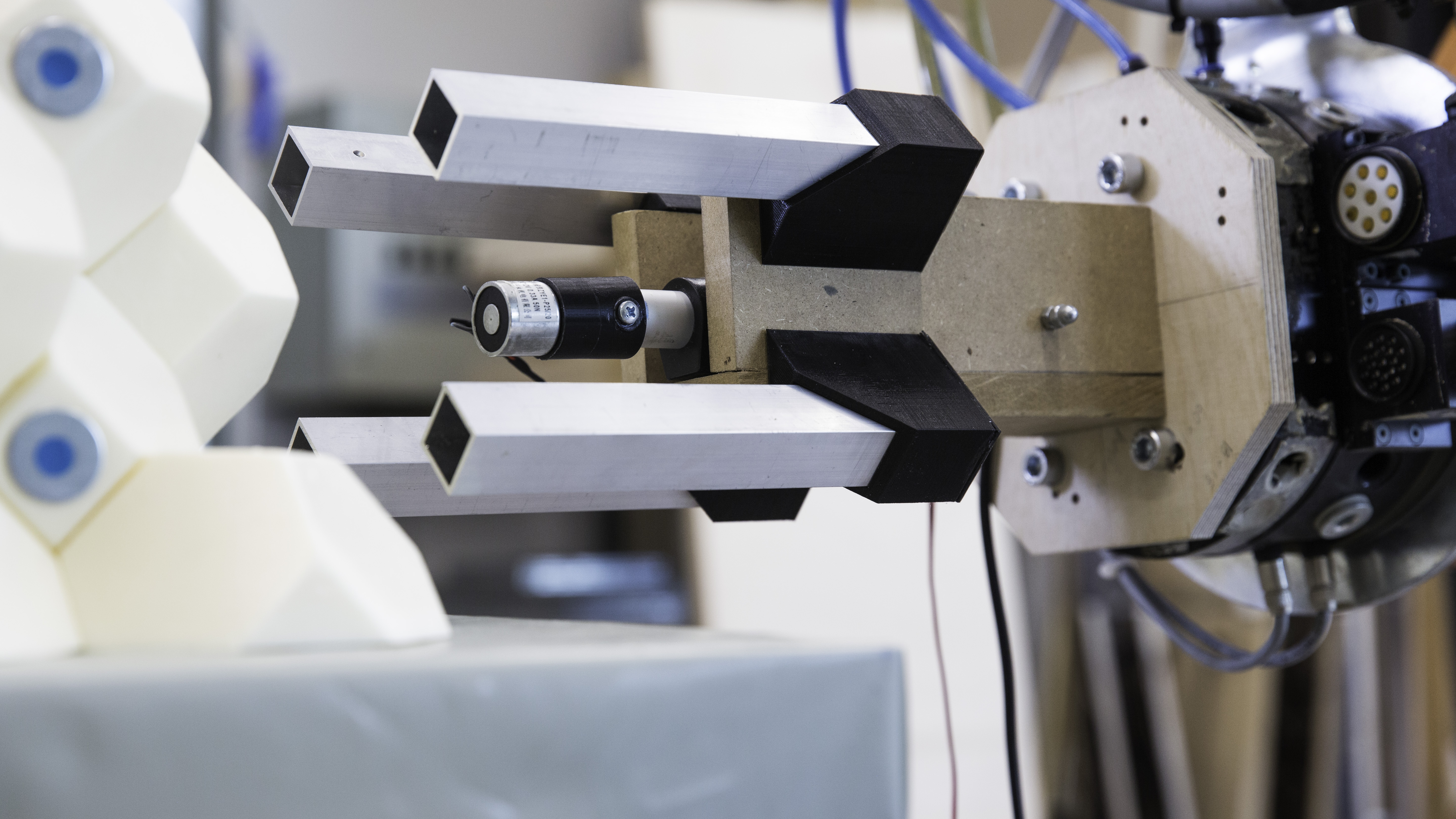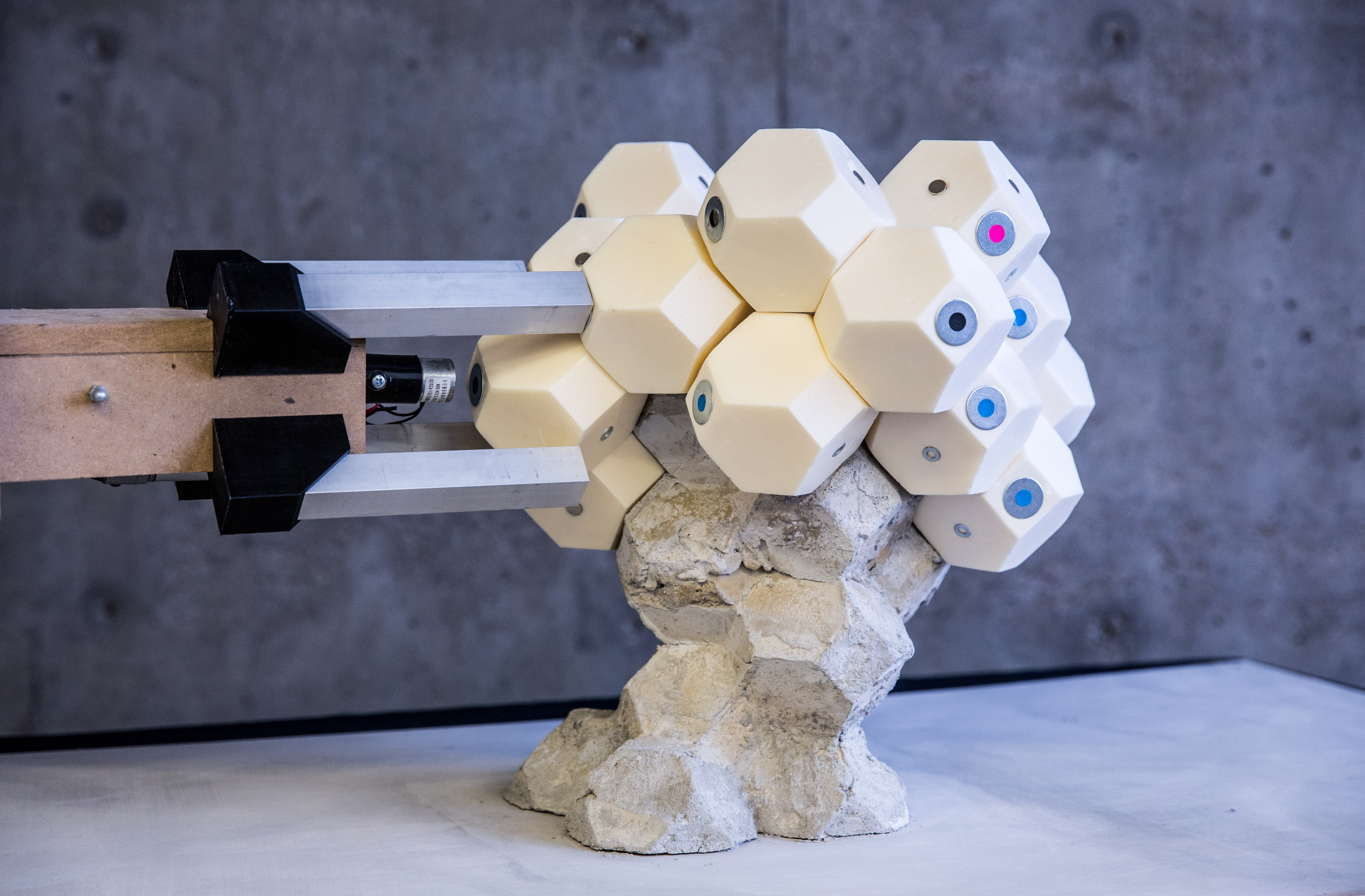Adaptive formwork has allowed 21st century designers, architects and engineers to re-envision the way buildings are constructed and conceived. The project aims to transition from highly individualized and complex formworks that are created a new for each project to simple and regularized formworks that can be applied to a variety of designs. The truncated octahedron was chosen for development as its rough angular shape allows for notching of the voxels and thus it wouldn’t slip down the existing structure. As an “Infinite” assembly the system allows for continuous concrete forms that show how they are robotically produced. For the purpose of prototyping a styrodur voxel that was robotically cut was chosen. Magnets on the hexagonal sides of the voxels held the units together in order to create the specified pour area.
Voxelcrete – Distributed Voxelized Adaptive Formwork. Samuel Leder, Ramon Weber, Lauren Vasey, Maria Yablonina, Achim Menges. Proceedings of the 38th International Conference on Education and Research in Computer Aided Architectural Design in Europe. eCAADe, Berlin, Germany 2020
.University of Stuttgart, ITECH, with Samuel Leder, 2017
ICD Prof. Achim Menges, Lauren Vasey, Maria Yablonina, Long Nguyen





